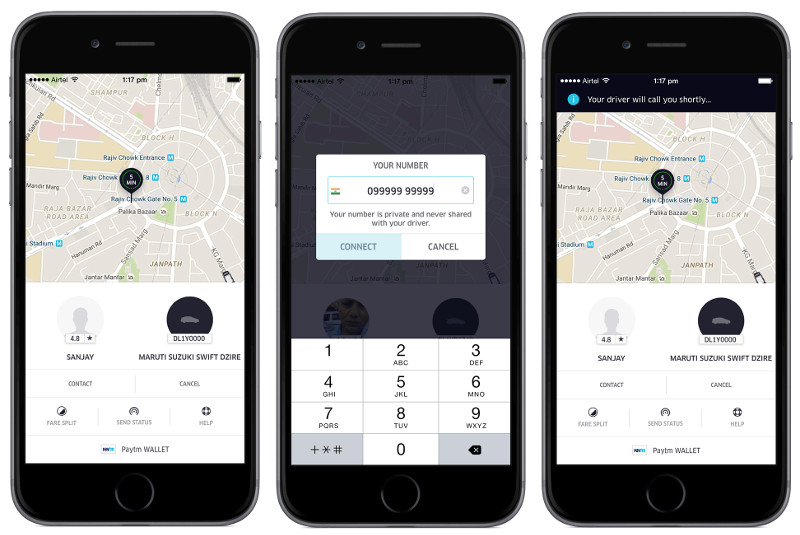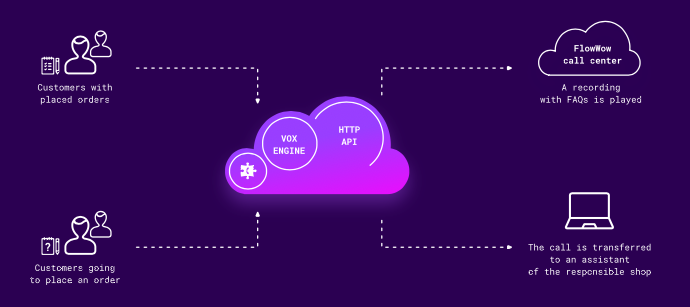With today’s consumers looking for more convenience in their daily lives, it’s no wonder the on-demand service economy is booming. Analysts expect the “sharing economy”, which is one segment of on-demand services to grow to $335 billion by 2025.
As the sector grows, customer expectations are changing. They want fast responses—three out of four online customers expect to receive help within just five minutes.
What does that mean for on-demand providers? To evolve with today's customers' expectations, on-demand providers must incorporate communications technology that delivers responsive, high-quality experiences. These five companies are doing just that.
Sulekha: Boosting Users’ Trust with Phone-Number Masking
Many customers are concerned about data privacy. In 2019, Pew Research Center revealed that 70% of adults believed that their data was less secure than it was five years prior.
Using phone-number masking, Sulekha — India’s largest on-demand local-service platform — addressed privacy concerns and improved customer satisfaction.
Each month, the platform works with over 20 million users, connecting them with local businesses across more than 800 industries in more than 40 cities. Those local businesses were keeping users’ personal phone numbers, resulting in frustrated customers receiving a lot of spam calls.
In 2017, Sulekha began using phone number masking. Businesses could communicate with Sulekha users by using anonymized phone numbers for both voice calls and SMS messages. This technology switch made it possible for the company to uphold its “Zero-Spam Assurance” policy.
With Voximplant, you can use phone number masking for both phone calls and SMS messaging.

Phone number masking assigns an anonymous or virtual number to both the customer and the company (source).
Flowwow: Reducing Call-Center Demand with Smart IVR
In 2019, the US on-demand work economy included a whopping 6.6 million people. Without the right digital transformation strategy or technology, you could be spinning your wheels fielding numerous customer service calls from all of this demand.
The key is using automation to speed up service. Flowwow, an online service platform for florists, used smart IVR technology to reduce the demand on its call center. A smart IVR automates and personalizes customer service calls. It connects directly to your CRM and uses customer data to answer routine questions.
Flowwow implemented smart IVR to divide customer service calls into three categories—retailers, customers placing an order, and customers checking an order. They greeted customer calls with one of 15 scripts, depending on which of the three groups they were in. As a result, the company bypassed live agents 30% of the time.
Boosting your IVR functionality will also save your business money. According to contact center research and consulting group DMG Consulting, the cost difference between having live agents handle calls and an IVR system managing calls is between $2.70 and $6.25—IVRs are the less expensive option.
With Voximplant, you can establish an IVR solution for your business that’s “5 to 10 times faster than a typical outsourced call center.”

Flowwow uses an IVR system to automate and personalize customer service calls and connect to an agent when needed (source).
Our IVR system lets you reach clients worldwide in multiple languages and dialects and use natural language processing and high quality speech synthesis that avoids that awkward robotic voice. And when a customer needs help from a human, you can still easily connect them to a live agent.
Urgent.ly: Facilitating Clear Communication in Real-Time with SMS messaging
While some consumers may still pick up the phone to dial a business when they need support, more and more people are picking up their phones to communicate with businesses via SMS messages. In a 2019 survey, a majority of respondents indicated that they’d prefer to engage with companies through text messaging. Over 60% of those surveyed said they’d leave a company they currently use to become a customer of a company that uses text messages to communicate with consumers.
With a mission to be a “human-centric roadside platform,” roadside assistance platform Urgent.ly built an effective SMS messaging system into its platform.
When a user needs help, they can request roadside assistance via Urgent.ly’s call center or through the app. Urgent.ly then connects the user with the closest available service provider. Once the user is matched with a service provider, Urgent.ly sends the user an SMS message so that they can share their location with the provider who’ll be assisting them.
Using SMS messaging to connect service providers with your users is one of the many ways companies can add a level of convenience to their customers through communications services. Voximplant's SMS API can be used to send one-way SMS messages to send information like reminders to customers, or you can use Voximplant to set-up real-time two-way messages between service providers and customers.
TaskRabbit: Accelerating Growth with Self-Service Apps
Generally, customers prefer to find answers to their questions on their own, mainly by searching a business’s website or app before contacting customer support. Many consumers expect to navigate services and find solutions independently, as 68% view self-service as a part of customer service. More importantly, their go-to place to solve a problem is a digital self-service tool, like an app or a live chatbot.
TaskRabbit watched customer behaviors shift in 2015, when mobile traffic tripled, and roughly 85% of its users made requests on their mobile devices.
In response, TaskRabbit launched a new app. It incorporated customer self-service features to reach its initiative of completing tasks within just 90 minutes. The app included booking, order history and tracking, payments, and invoicing features. It also had an in-app chat and help center if users needed to contact customer service agents.
Using Voximplant’s app-to-phone integration, you can connect customer service agents to self-service tools like mobile apps or websites. Use live chat and personalized messaging to help customers with issues. Chat bot capabilities enable you to handle large quantities of inquiries and keep customers notified of solutions.
Domino’s: Growing Sales with Live Delivery Updates
Narvar’s Consumer Report 2018 revealed that 83% of customers wanted to receive purchase updates from the company. Not only do delivery notifications meet customer demand, but they also boost retention and sales. According to a Dropoff poll addressing holiday delivery, 85% of consumers said they’d buy again if they could easily track their purchases in real-time throughout the delivery.
Responding to these trends, Domino’s built a delivery tracking system. This technology helped the company experience same-store sales growth for 24 consecutive quarters, an “incredible” feat, as described by analyst Brian Bittner. In 2019, Domino’s started implementing live GPS tracking in its U.S.-based locations, with the goal to roll out the technology and include the majority of its stores in 2020.
Voximplant lets you send delivery updates and confirmations to your customers using voice notifications and programmable messaging. By integrating our messaging services into your systems, you can provide reminders or updates that’ll help increase your reach while reducing costs.
Stay on Top of On-Demand Service Trends with Voximplant
Ever-evolving customer trends require innovative solutions that keep your business at the forefront of industry growth. Communications solutions like phone number masking, SMS messaging, and live update notifications along with time-saving functionalities like self-service features and smart IVR help keep customers connected to your services. These features also boost customer loyalty by enabling you to provide better customer experiences through modern communications solutions. At Voximplant, we can help you embrace change and adapt even more innovative communication strategies to set you apart from your competitors. Explore what we offer on our platform, and get started for free.





